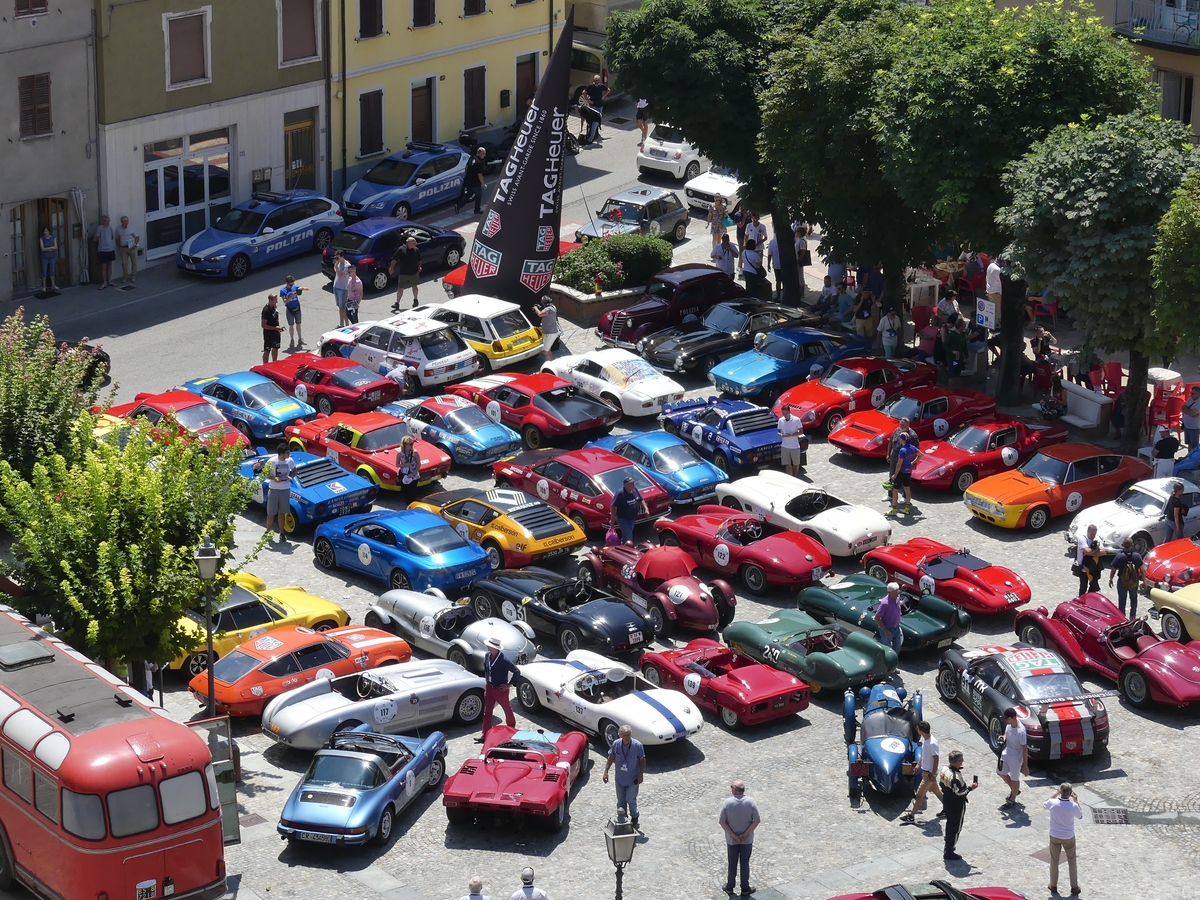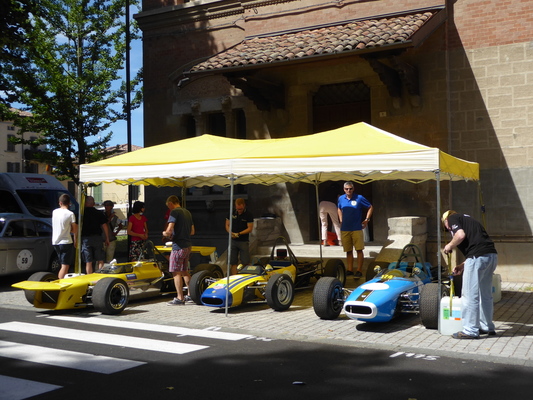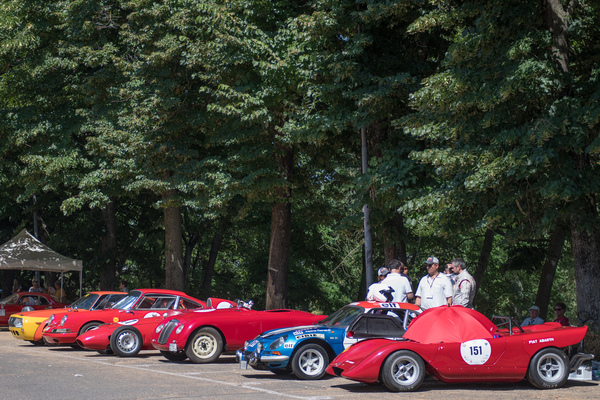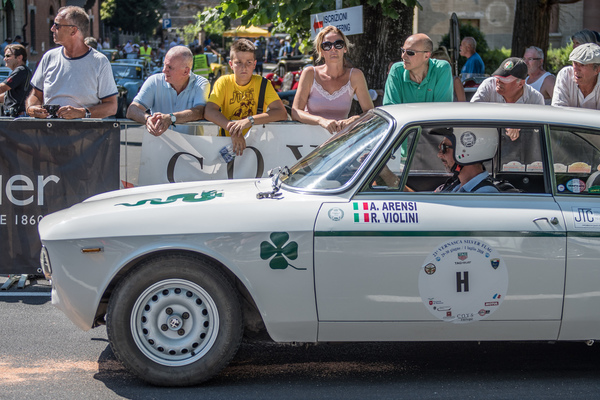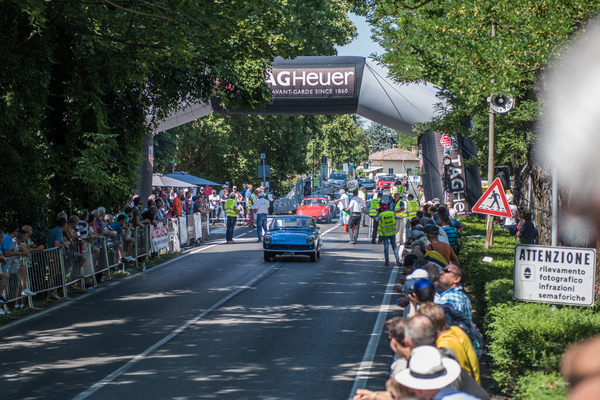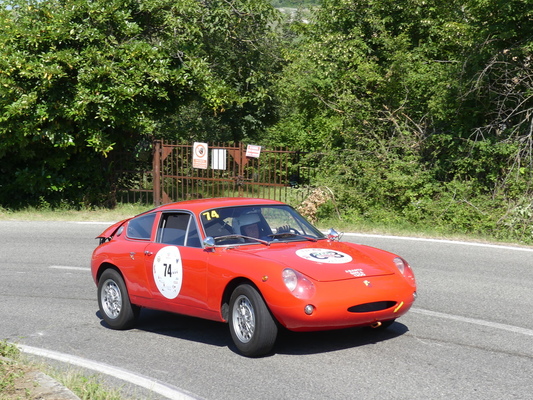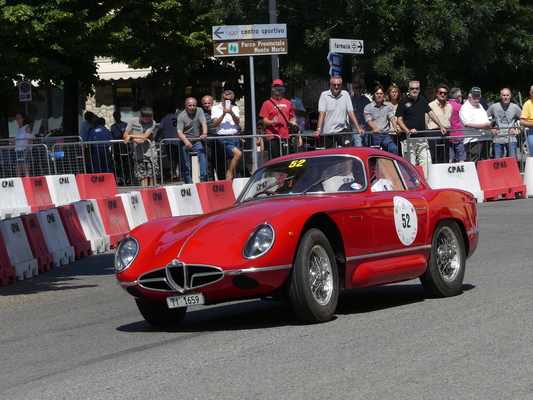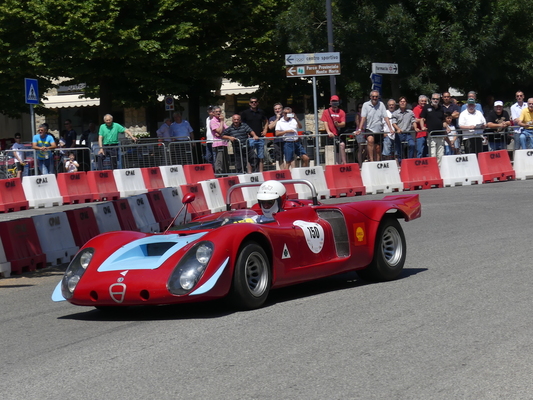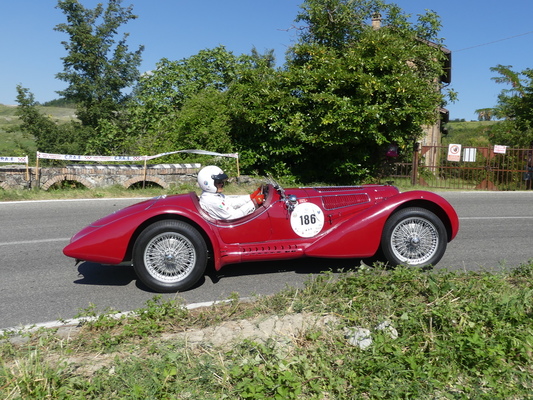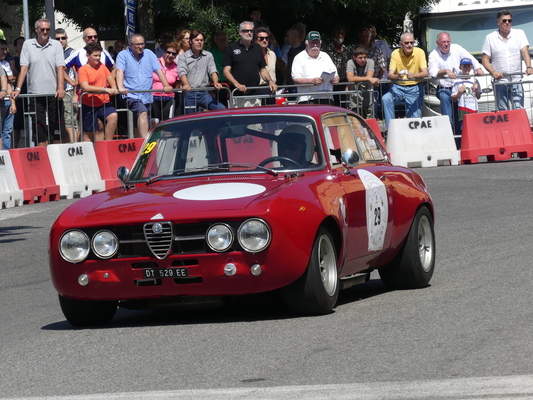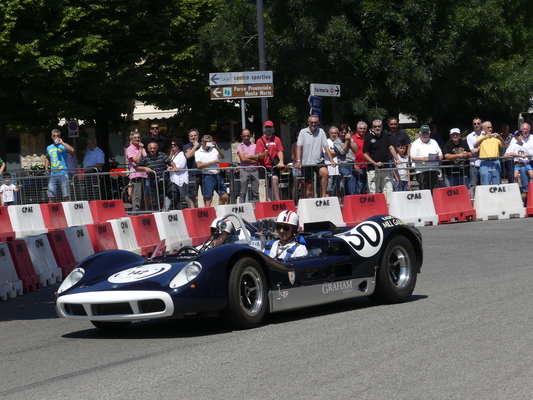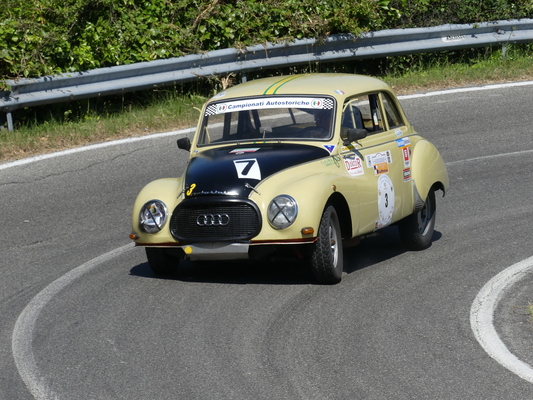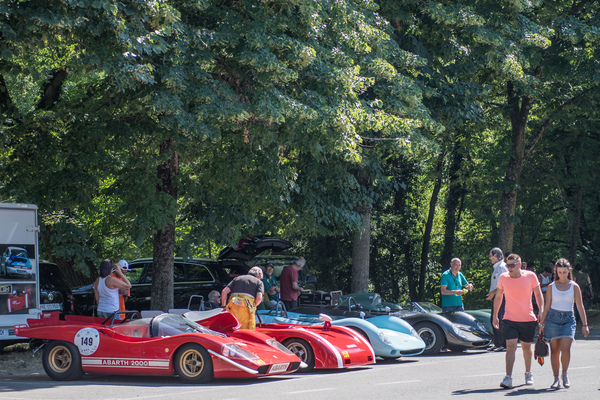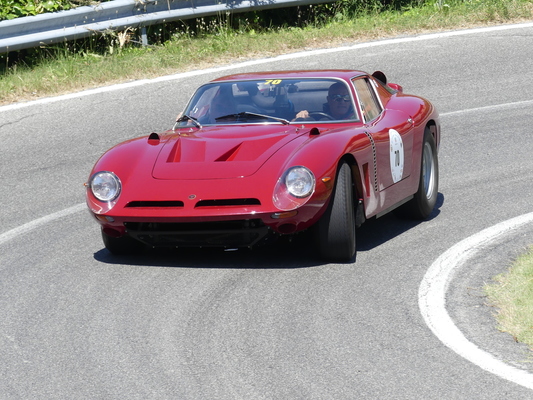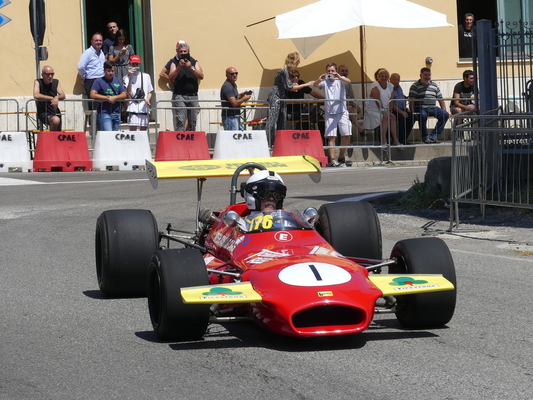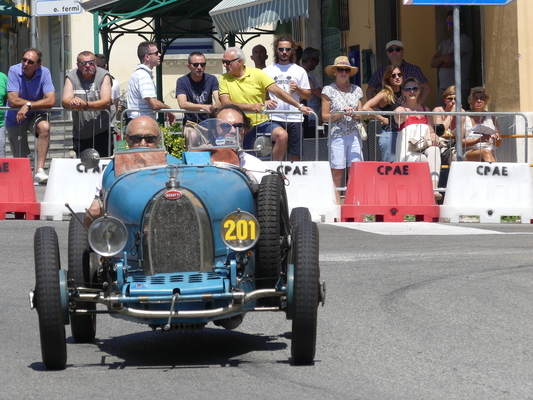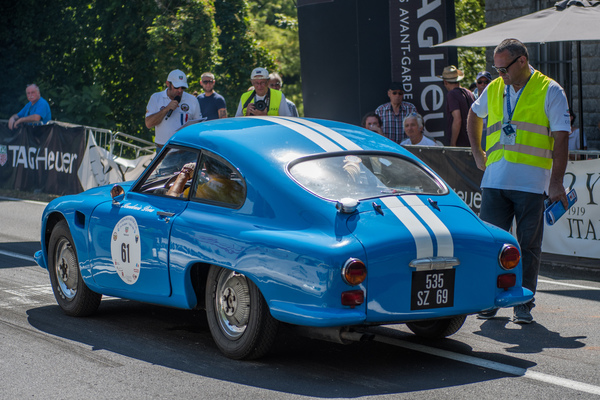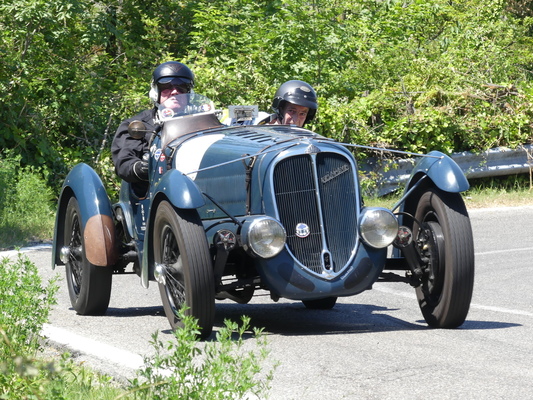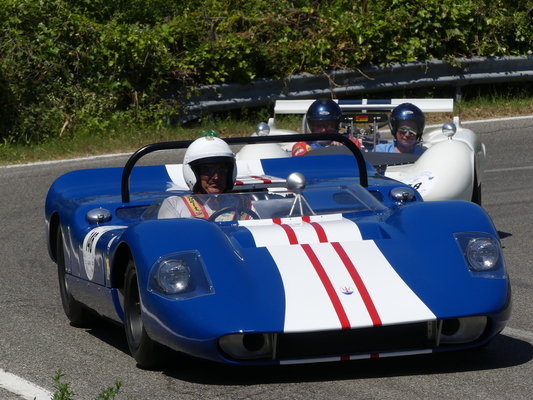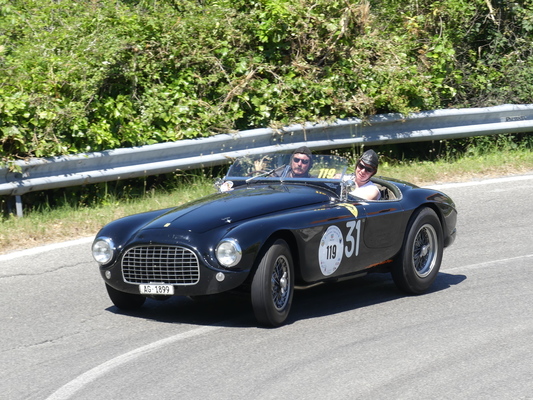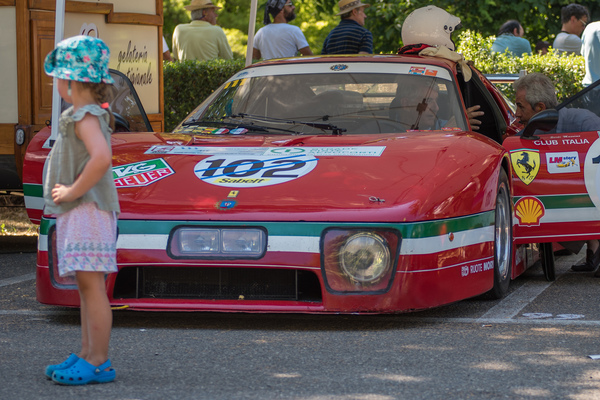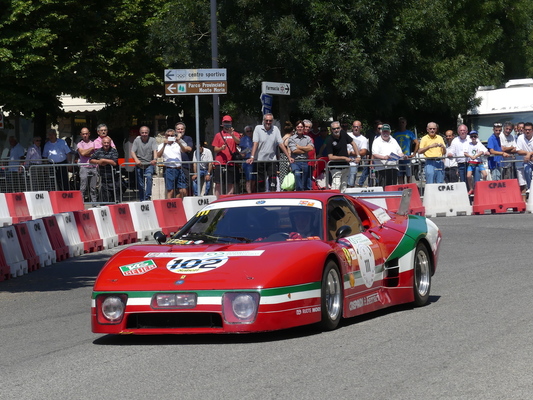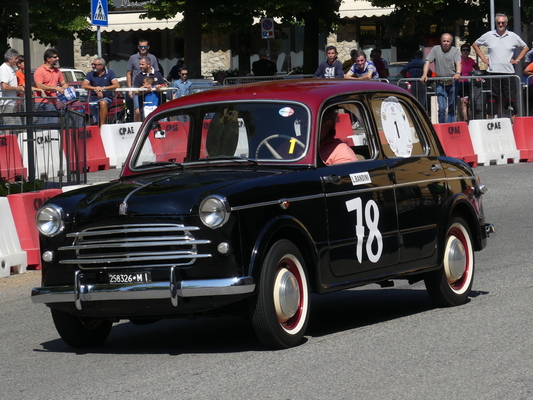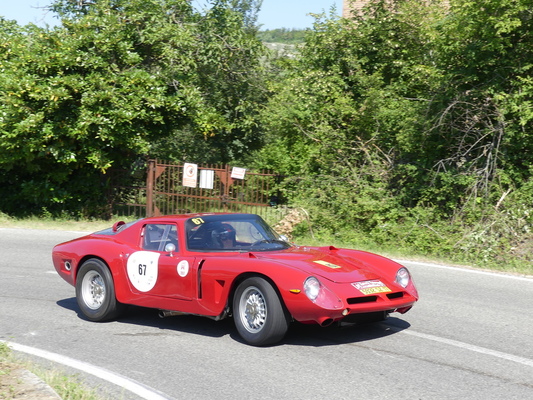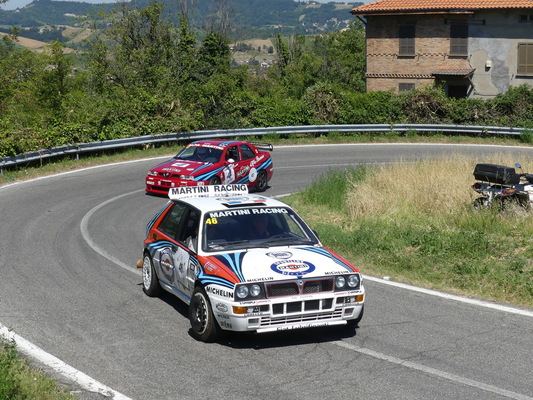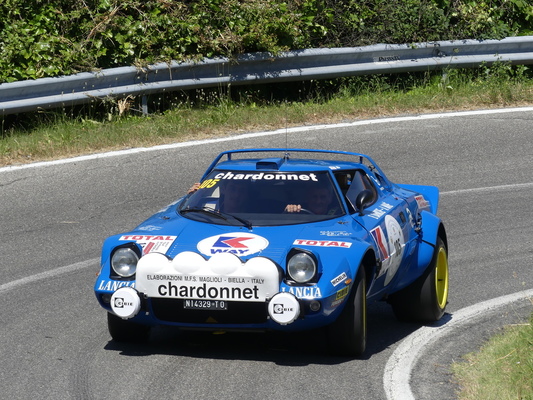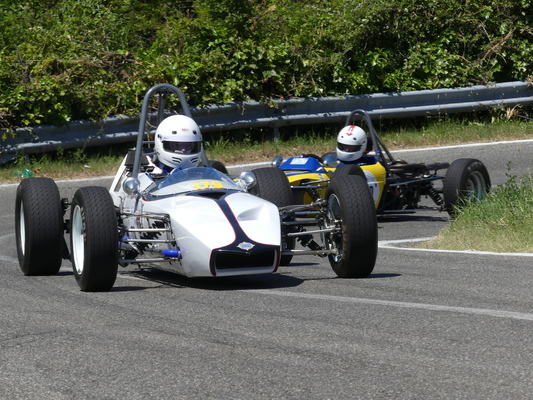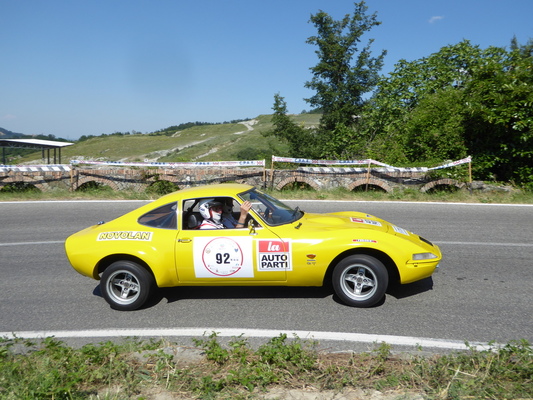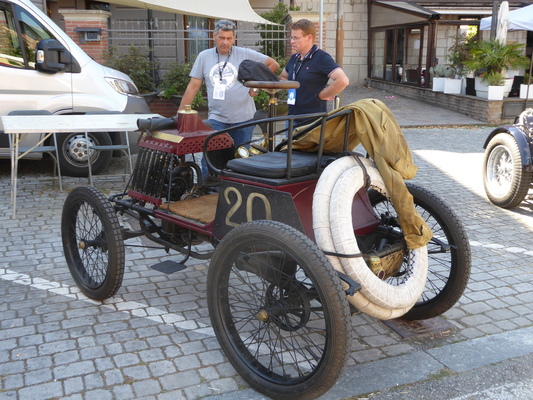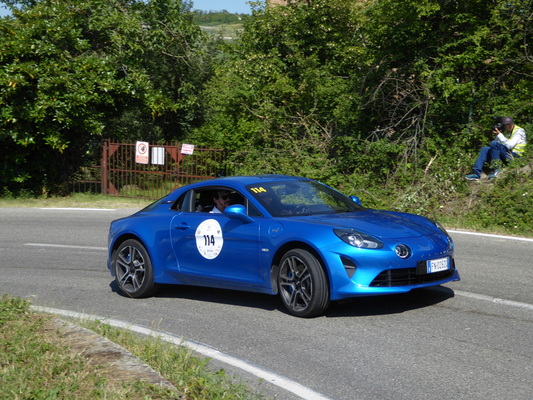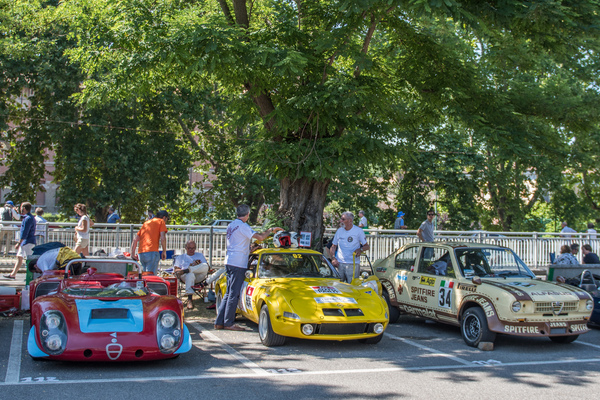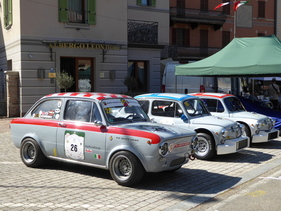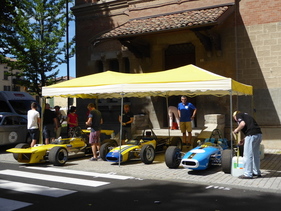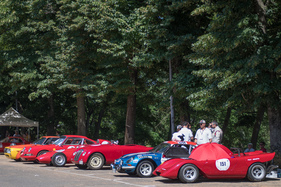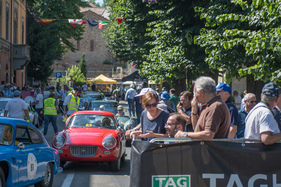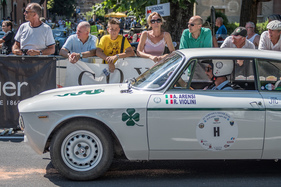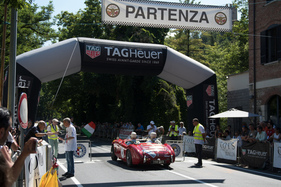The C.P.A.E. (Club Piacentino Automotoveicoli d'Epoca) organized the 23rd edition of the demonstration runs from Castell`Arquato to Vernasca for classic racing cars and sports classics from 29 June to 1 July 2018.

La Corsa on the country road - first kept flat, then up high
What did the racing enthusiasts of Piacentino have in mind when they set up a regional hill climb in 1953? Perhaps the four-kilometre mountain route from Lugagnano to Vernasca was too short for a race and they added an additional five kilometers of flat route from Castell'Arquato through the Arda Valley.
Well, they had the idea of creating a mountain race with a long run-up and realized the speed competition "Castell'Arquato - Lugagnano - Vernsaca" from the exit of Castell'Arquato to the finish line at the church of Vernasca.
The success of the following years rewarded the organizers with increasing popularity among riders and spectators. Racing greats such as Arturo Merzario and Ludovico Scarviotti were at the start and in 1967 around twenty thousand spectators lined the route. At the last of the 17 races in 1972, the second-placed driver crashed into the steps of the church staircase five meters from the finish line before flying through the finish line. Could this incident have heralded the end? Who knows whether higher powers punished the outrage and put an end to the race.

Rebirth as Concorso dinamico without timekeeping
For more than 20 years, the roads were only allowed to endure the humdrum of everyday traffic, but they dreamed of the former annual boost of racing cars. In 1996, the people of Piacentino awoke their former race track from its slumber and relaunched it as the Vernasca Silver Flag.

In keeping with the spirit of the times, they transformed the race into a competition for the most beautiful and original, but without forgetting the dynamics of the Concorso. Another change concerned the protection of the church steps. To take the steps out of the field of fire, the finish line was moved to the entrance of Vernasca.
Great popularity
Year after year, mountain enthusiasts from Italy, Switzerland, Germany and France have made the pilgrimage to the Arda Valley with their "belle Macchine". They bring with them a broad spectrum of the sporty and historic automotive world, which always triggers joy and enthusiasm.

The diversity is not just about the brands, of which the Italian share from Abarth to Zagato predominates, but also the destination, which manifests itself in the grouping. In the "vetture turismo e gran turismo", fine coupés and sports cars, including many from small series, and a few four-door cars, meet thoroughbred racing touring cars and rally beasts. The group of open-top two-seater racing cars is collected in the "vetture sport e sport prototipo". In the "vetture monoposto" group, the formula racers keep to themselves and the "vetture anteguerra" group celebrates the pre-war Grand Prix past.
Vitesse en bleue
Vernasca Silver Flag never gets boring, because the starting fields always experience new impulses with an annually changing motto: this year, the focus was on French racing and sports cars with "vitesse en bleu".

In addition to Le Mans, the World Rally Championship comes to mind, when the light and flat flounders of the ingenious Jean Rédelé scored a string of victories in the 1970s. The call was also heard by the Alpinists, who acquired six Alpine A110s and thus enriched the Concours dynamique alongside the eight Bugatti and over twenty other French cars. Even though a Renault Type C from 1900 came from France, the latest creation, the nuovo Alpine, was allowed to take part as a kind of "macchina futura d`epoca".

The ancient Renault was spared the mountain stage, perhaps also because the load of two bottles of Chablis gave the crew more pleasure. Two Renault R4s in rally trim proved that even weak-chested everyday workhorses can be dynamized. Back to the motto: the two Delahaye 135s with the six-pack under the hood really did demonstrate the finest French automotive engineering.
Up close and personal with the cars in the paddock
On Friday around noon, the paddock in the lower town and the large parking lot with the numbered parking spaces of Castell'Arquato still resembled a patchwork. The ristorante on the corner of the entrance offered the ideal place to watch the cars arrive with a glass of "vino rosso". There was a goosebump feeling as Bugattis and Alpines rolled onto the square with still relaxed noises.

The next day they were allowed to show what they were really made of. Soon the marshallers were in full swing: whether on the road, in trailers or race transporters, everyone wanted to get to their places. It was like Christmas when it was finally time to unpack. There was an Abarth from Holland, a Lancia from Italy, a Lotus from Germany over there, a Delahaye from France on the left, an Alfa Romeo from Switzerland on the right, and further back, four racing cars from the English racing truck were being transported to freedom. The field gradually filled up, filling the air with the voices of the wild animals waiting to make their racing entrance, but only after a night's rest monitored by security.
For registration, the participants gathered in the small park, whose trees kept the sun at bay, a welcome relief in the 34 degree Italian summer heat.
Hats, preferably wide-brimmed, also help against the sun. A cowboy hat, the hallmark of an Italian hero in motor racing, is also allowed. For Arturo Merzario, the 1969 European Hillclimb Champion in an Abarth 2000 and 1972 Targa Florio winner together with Sandro Munari in a Ferrari 312 PB, it replaces the brimless jet helmet. Vernasca Silver Flag without Arturo would be like Italy without pizza.

In keeping with the motto "vitesse en bleue", a French star was not to be missed. Bernard Darniche, Monte Carlo winner in 1979, took us into the stratosphere.
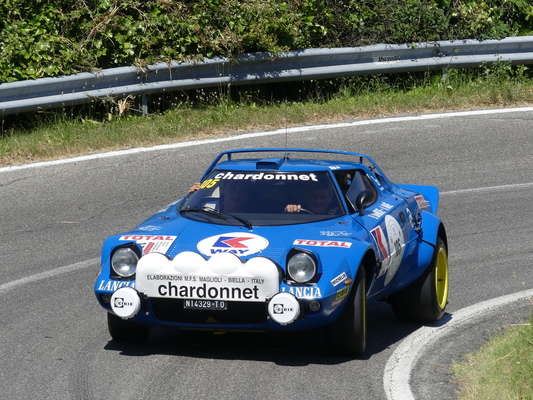
Fifth gear at the stop in the Arda Valley, kink in Lugagnano, and curving up to Vernasca
"Mangiare" in Italia never starts before 7 pm and stretches from antipasti to dolci. No wonder the first run on Saturday didn't start until 11 am. By then, vino and grappa had been equalized and sleep had been gently dissolved by the southern morning sun.
As fresh as Asti Spumante, over 200 riders waited impatiently at the start line to sprint off at full speed every half minute after the start flag was waved. The section of the route between Castell`Arquato and Lugagnano runs "tutto diretto" except for a few long, wide bends.

Artificial chicanes, such as in Lugagnano, just before the left-hand bend to Vernasca, put the brakes on the exuberance. It was fascinating to see how the racing cars drifted through the spectators on their way through the village. Then the flat was over. The mountain was calling and the "Volante" were spinning. Over 30 bends kept the hill climbers in "furioso" active mode. The final point was the piazza in Vernasca, but only "piano" from the entrance to the village because of the church steps.

The drivers were able to have this fun again in the next two races on Saturday afternoon and Sunday morning.
The entire valley was filled with the music of the engines, coming out of the exhaust pipes of the racing and sports cars. Giacomo Puccini, if he were still in this world and inspired by the sounds of the Arda Valley, would certainly have composed an "Opera dei Motori" immediately. And his librettist, the Castell'Arquater Luigi Illica, would certainly have been delighted to contribute the text.
Start and winner lists can be found on the organizer's website , where you can also register next year.
